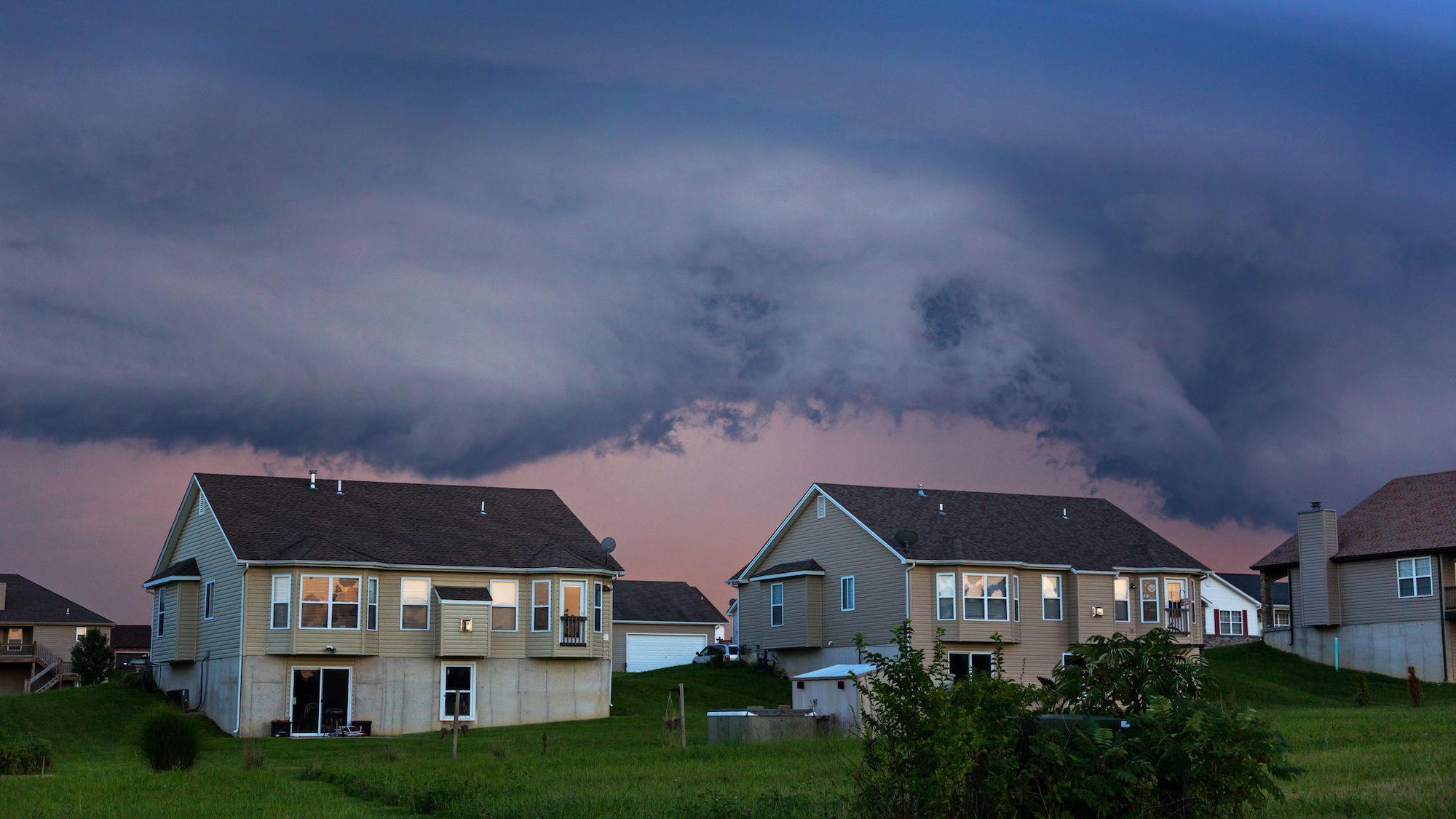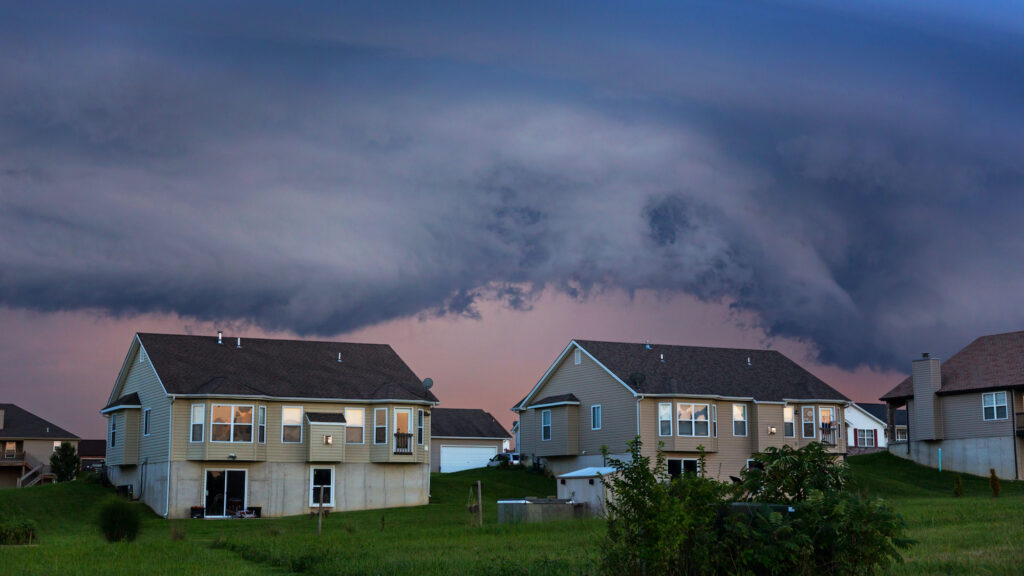
Getty Images
It’s tough to understate how difficult it is to be a home buyer in today’s real-estate market.
There are so many people looking to buy homes — some families are deciding to move because of lifestyle changes brought on by COVID-19, while others are simply looking to buy as they get married and have kids.
The trouble is there simply aren’t enough homes to go around. After the last recession, home builders slowed construction activity such that it didn’t keep pace with the country’s growing population. And now, with this recent surge in demand, homes are flying off the market in a blink of an eye.
As a result, prices are skyrocketing at a record pace, and buyers are being forced to consider taking risky steps to make their offers more attractive. Case in point: MarketWatch editor Steve Kutz decided to buy his home after viewing it for 15 minutes.
Veteran real-estate economist Ralph McLaughlin doesn’t mince words in describing how challenging this market is.
“We’ve been caught in a death spiral that started at the onset of the pandemic-induced recession,” McLaughlin, who is chief economist and senior vice president and real-estate finance company Haus, told MarketWatch. “And it’s spiraled out of control.”
Politicians could make matters worse, McLaughlin argues. Lawmakers, including President Biden, have proposed a range of policies related to real-estate that may boost demand without adding more supply into the market.
Rethinking the capital gains tax
McLaughlin argues that lawmakers should think of ways to improve the supply situation nationwide. His proposal: Reforming the capital gains tax.
In a recent blog post, he outlined how changes to the capital gains tax could make it a “carrot” to lure sellers into the market, while at the same time benefiting first-time buyers. Under his approach, the capital gains tax would be exempted for property sellers, especially real-estate investors, if they specifically sell the home to a first-time buyer.
Such a policy could be particularly attractive to investors who bought up homes in the wake of the last recession and converted them into rental units. These investors might feel burned by their holdings, since the rental market has struggled in many parts of the country as a result of COVID-19.
“You’re enticing a swap of ownership from investors to the people who are renting those homes,” McLaughlin said.
If the policy gained traction, McLaughlin believes that Americans could see more momentum from existing homeowners listing their homes on the market. What’s more, McLaughlin argues that such a policy could see bipartisan support, since various elements would appeal to Democrats and Republicans alike.
The carrot vs. the stick
McLaughlin’s vision differs significantly from the tax policies President Joe Biden proposed last month to pay for his broader economic agenda.
The White House has called on Congress to increase the capital gains tax rate for households making over $1 million to 39.6%. The Biden administration also proposed other changes, including eliminating the Section 1031 exchange program that allows real-estate investors to defer taxes in certain scenarios.
McLaughlin described the proposal as “a double-edged sword.”
“I fear the policy may lock in investors for a much longer period of time than with the current rate, and thus be counter-productive in helping free up investor inventory,” he said. “When it comes to housing supply, history suggests carrots work better than sticks.”
Some economists agreed, saying that investors may opt to hold onto the homes they own for longer in the hopes of a more favorable policy if Biden’s plan becomes law. Others, though, argued that tax policies in and of themselves may not ultimately influence the housing market a whole lot.
For example, the Tax Cuts and Jobs Act signed into law by President Donald Trump eliminated the deductibility of state and local taxes from federal taxes. At the time, some believed it could lead to a mass exodus from pricey real-estate markets on the coasts, where taxes are higher. While there has been some migration from high- to low-tax states, these markets haven’t bottomed out either.
“There was concern of negative effects on high-cost markets, but these seem to have been overcome by the more important supply and demand dynamics,” Tendayi Kapfidze, chief economist at LendingTree, told MarketWatch.
“Fundamentally, that’s not going to make things any better for buyers in the long run,” McLaughlin said.
The problems with a $15,000 tax credit
Policymakers, meanwhile, are looking for ways to make home-buying more accessible to a wider swathe of Americans, but without addressing the supply-side challenges matters could get much worse.
Last year’s election cycle was unusual in how often candidates brought up the topic of housing. During his campaign, President Biden floated the idea of creating a $15,000 tax credit for first-time homebuyers to use toward the down payment for a property.
While the $15,000 tax credit did not ultimately form part of the recent economic plans the White House has rolled out, Democratic lawmakers in Congress have run with the idea. Reps. Earl Blumenauer and Jimmy Panetta, both Democrats, last week introduced the “First-Time Homebuyer Act.”
The bill would create a tax credit worth either up to 10% of the purchase price for a home or up to $15,000. To be eligible, a household cannot have owned or purchased a home within the past three years.
Only homeowners who made 160% of the area median income or less would be able to take advantage of the credit, and there would also be limits on how expensive the home would be.
“We need to do more to create opportunities for those who’ve been locked out of homeownership by creating incentives for first-time homebuyers,” Blumenauer, who represents Oregon’s 3rd district, said in announcing the bill.
“This legislation is just one element of the big, bold housing agenda that we are promoting to combat the housing affordability crisis, and address centuries of overtly racist and discriminatory housing policies that have left massive wealth, homeownership, and opportunity gaps between white communities and communities of color,” Blumenauer added.
The problem with such a proposal, McLaughlin argues, is that it could end up hurting the communities it’s intended to serve given the restricted supply of homes for sale in many markets today.
“That kind of policy was much more suited to a 2010 or 2012 housing market where there was plentiful supply and not enough demand,” he argued.
With the sudden boost a policy like that would offer renters, many could flood into the market looking to buy, especially at the lower-end of the price range where supply is already tightest. The added competition could push prices even higher, and end up pricing these very buyers out of the market again.
“A $15,000 tax credit in the short-to-medium term is likely to make the supply crunch more intense,” he said.
The post ‘We’ve Been Caught in a Death Spiral’: Could This Simple Tax Reform Help Struggling Home Buyers? appeared first on Real Estate News & Insights | realtor.com®.
